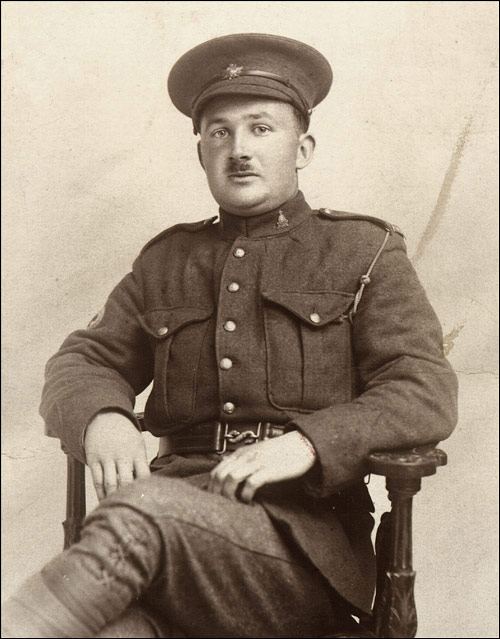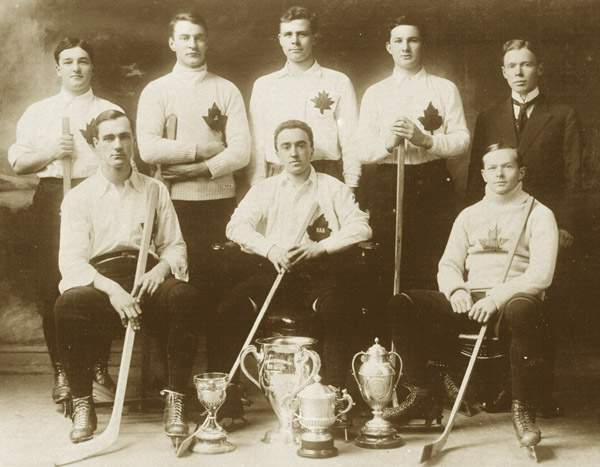Jack Higgins: Newfoundlander Through and Through
From the files of The Gazette July 9, 1998.
It is indeed an ironic twist of fate that Senator John G. Higgins died on Canada Day, July 1, 1963. As a veteran of the First World War, he would have said he died on Memorial Day, the day Newfoundlanders commemorate the massacre of the Newfoundland Regiment at Beaumont Hamel. It was just as ironic that Jack Higgins was even a member of the Canadian Senate; he had fought long and hard to keep Newfoundland out of Canadian Confederation in the late 1940s. But such ironies were an integral part of the life of this unheralded Newfoundlander.

John Gilbert Higgins was born in St. John's on May 7, 1891, the son of John Joseph Higgins and Hannah O'Grady. His father died when he was a small child, and his mother supported him and his older sister, May, through her dressmaking business. His mother and her housekeeper, Mamie Hyde, were very stable and caring influences in Jack's early life.
Higgins began school at the age of five at St. Bonaventure's College, where he excelled in academic, athletic and extra-curricular endeavors, winning many scholarships. Shortly after his graduation he was selected as the 1909 Rhodes Scholar for Newfoundland and spent the next three years at Merton College, Oxford, where he read law, and captained the seven-member Oxford-Canadian Ice Hockey Team, which also included Newfoundland 1910 Rhodes Scholar, Robert Tait. This team, which toured Europe, was undefeated in the 17 matches it played, outscoring the opposition 204 goals to 17.

In 1913 Higgins was called to the Bar of England and the Bar of Newfoundland, and set up law practice in St. John's. He took a leave from his practice in 1916 when he joined the St. Francis Xavier Hospital Unit of the Canadian Army, serving in England and France during the remainder of the war.
Once back in Newfoundland in 1919, Higgins entered into a law partnership with Harry Winter, which lasted until Winter was appointed as Commissioner for Home Affairs and Education in 1941. He then joined the firm of Fox, Higgins, Knight, Phelan and Hawkins, but left that partnership in the early 1950s to practice law with his cousin, James D. Higgins, under the name Higgins & Higgins.
Higgins built a solid reputation as a hardworking and diligent lawyer, who enjoyed the trust and respect of his clients. During the Second World War he represented the British Admiralty and the Canadian Department of National Defense, negotiating claims arising out of land requisitioned for defense purposes.
Despite his connections with Canada in both world wars, Higgins lined up on the opposite side when the National Convention began debating Joseph R. Smallwood's resolution that confederation with Canada be a ballot choice for Newfoundlanders in a proposed referendum on the future forms of government to replace the Commission.
Higgins became one of the leading members of the Responsible Government League, firm in his belief that Newfoundland should return to self-government before any negotiations should be begun with Canada. He participated in both referenda campaigns, contributing his speaking and writing talents and financial support. Never one to take defeat lightly, on March 31, 1949, he hung black crepe, a symbol of mourning, over the door of his house.
There had been no elected House of Assembly in Newfoundland during the 15 years of the Commission of Government. An election was scheduled to elect a new House on May 27, 1949. Higgins, never before a candidate for elected office, was returned by the voters of St. John's East as a member of the Progressive Conservative Party. As party leader H. G. R. Mews had been defeated in the election, Higgins became the leader of the opposition, the first in post-confederate Newfoundland. His term in the house was short-lived, however, as he was not a candidate in the next election in 1951, preferring the logic of the law courts to the fractious debate of the House of Assembly.
His political career was not over. On January 15, 1959, Prime Minister John Diefenbaker appointed Higgins as the first Progressive Conservative Senator from Newfoundland.
The record of Higgins's contribution to Newfoundland society would fill volumes. He was a life-long member of the Knights of Columbus, rising through the ranks to become State Deputy and Grand Knight. He was a founding member of the Fish and Game Protection Association, serving for many years as its president. He helped organize and served as secretary of the South Coast Disaster Fund, established to assist victims of the 1929 tidal wave in rebuilding their lives. For 25 years he was secretary of the Rhodes Scholarship Selection Committee. He was president of the Great War Veterans' Association, Treasurer of the Newfoundland Law Society, Vice-president for Newfoundland of the Canadian Bar Association, served on the Playground and Recreation Association of St. John's and the Newfoundland Adult Education Association. Many other organizations benefited from his talents, energy and financial resources.
Higgins married Alice Casey of Harbour Grace on August 13, 1925. They had three children, Gilbert, Mary Margaret and John. He was made King's Counsel in 1932. He was also a fine poet, who published in local magazines such as the Newfoundland Quarterly on a regular basis. Much of his poetry remains unpublished.
Jack Higgins was an ardent Newfoundlander. He was a lover of books from childhood and began collecting Newfoundland books at an early age. He purchased many rare and valuable documents, mainly from England, concerning Newfoundland.
After his death, Memorial University Library acquired many of his books, and his papers. The papers include extensive correspondence with family, friends and colleagues, records of his involvement with the many organizations in which he served, documents relating to his practice of law and his political involvement. There are photographs, scrapbooks, and other memorabilia documenting the many facets of his life. It is a very comprehensive body of material from a man who threw away nothing that might have some potential value.




